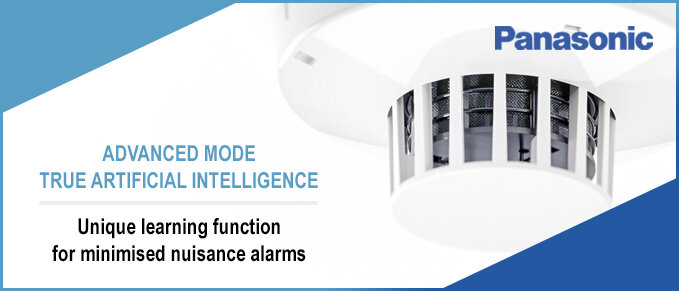Nuisance alarms or erroneous alarms have a lot of negative impact in the fire detection. At first, it will create unnecessary panic when people try to evacuate the building under the assumption that there is a fire and a real danger. Secondly, it will for no legitimate reason occupy emergency resources, such as fire brigade and police. Additionally, there is a cost due to the loss of production or business when the factory, office or shopping center is under evacuation and investigation before people are allowed reentering the facilities and resume their activities. Finally, if nuisance alarms occur occasionally people will start to lose trust in the fire detection system and ignore the alarms, which is the most dangerous consequence of nuisance alarms.
Modern smoke detectors operate with an optical detection principle where smoke particles inside the detection chamber generate reflections which are detected and then, an alarm is generated. Also, other particles entering the smoke chamber may generate reflections and then consequently nuisance alarms. Examples of unwanted items entering inside the smoke chamber that potentially can cause alarms are dust, steam, spider strings and insects.
There are several ways to mitigate these problems and the more advanced detector systems provide some or several of these measures.
The first and maybe most obvious action is to try to prevent the unwanted items from entering the smoke chamber. This is however not as straight forward as it may appear at first sight, as smoke has also particles and a smoke detector must always be able to detect several different kinds of fires. Panasonic carried out an 18 month long comprehensive study to establish the causes for false alarms and it turned out that more than 75% of all the nuisance alarms were caused by dust, spider strings or small insects entering the smoke chamber. They all had a larger size than the smoke particles coming from a real fire. Then the engineers developed a new mesh net with smaller holes. In order to verify the solution detectors were mounted side by side, one with the old mesh net and another one with the new one during an evaluation period of 18 months and the conclusion was that the main cause was almost eliminated.
There are however more reasons for nuisance alarms. Another major contributor to those problems is the variations between the surrounding environments of the installed detector. The smoke detector is the same regardless of in what kind of facility it is mounted in and the difference in conditions between a conference room and the kitchen or the mechanical work shop is huge. In the conference room the temperature is stable and there are no sources that generates any smoke or pollution, whereas on the other hand the kitchen may include steam from boiling pots as well as smoke from the burned beef or calm as the conference room in the night time. How can you cope with all of this?
The simplest way of trying to mitigate the problems is to introduce some time delay between the detection of a fire and the actual alarm, which will provide some possibilities to handle very short variations in the detection environment.
A more reliable way is to use modern detectors that often has some kind of SW settings where you can select between different levels of detection sensitivity like allowing for some more disturbances. Sometimes it is also possible to switch between different sensitivity levels depending of the day of the week or hour of the day to adapt to the activity in the building. What is extremely important when using detectors with variable sensitivity settings is to make sure that all the settings are tested and approved by the notified body that has issued the product certificate, otherwise it can be large problems with insurance companies and authorities at fire.
An even more advanced and more reliable solution is to have a detector with dynamically adjustable fire alarm level and time delays. Such kind of detector has a significant computing power and intelligent algorithms that makes it possible for the detector to analyze the situation. With very high accuracy it determines if it is a real fire alarm or a disturbance. With this kind of very advanced functionality, you get the highest level of protection and the smallest risk for nuisance alarms.
Finally, the most reliable detector with highest possible sensitivity has all of above and also a learning function, so the detector by itself constantly evaluates and understands in which environment it is installed and automatically selects the optimal detection algorithm at all times.
All these functions are found in Panasonic’s unique and innovative range of addressable smoke and multi detectors.
You can download here the general catalogue where we explain your everything about Panasonic’s detectors’ true artificial intelligence.

